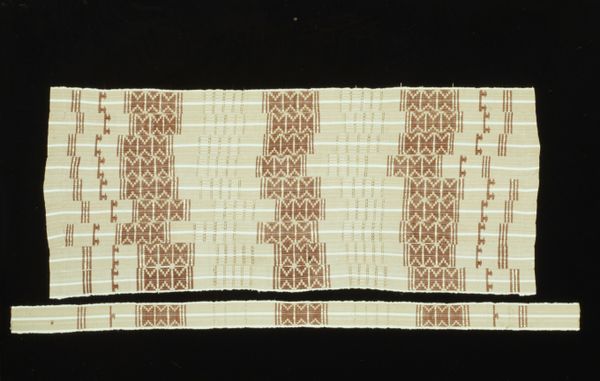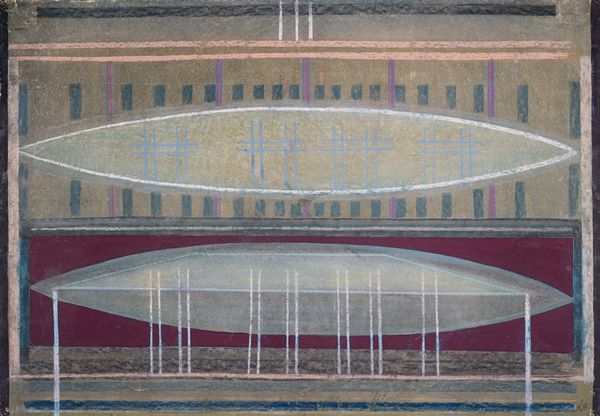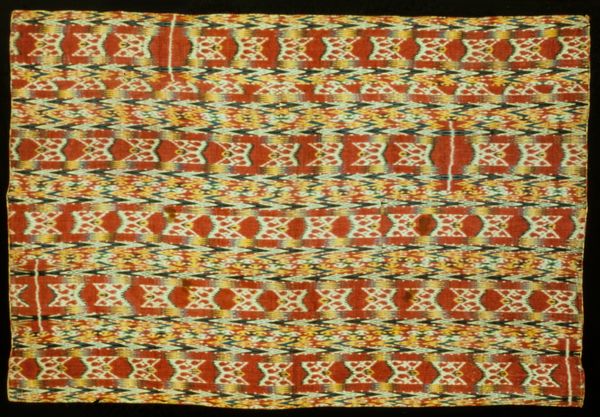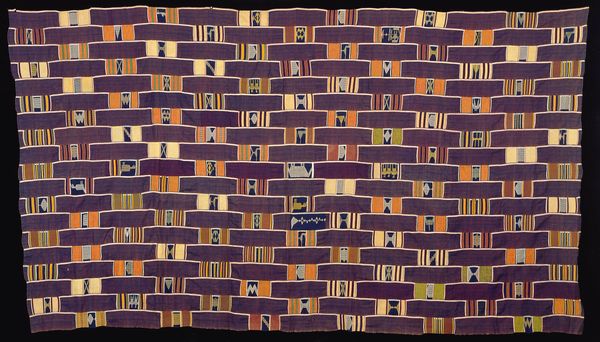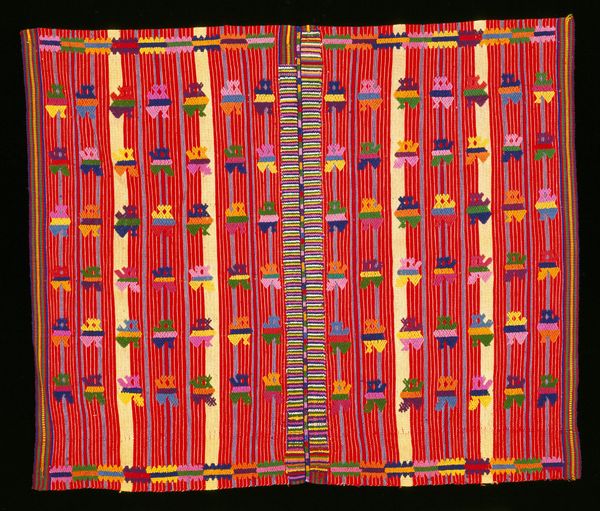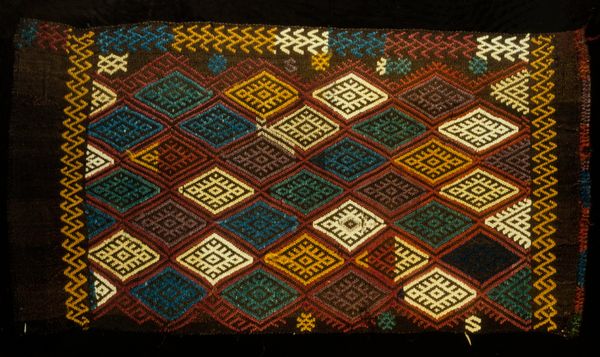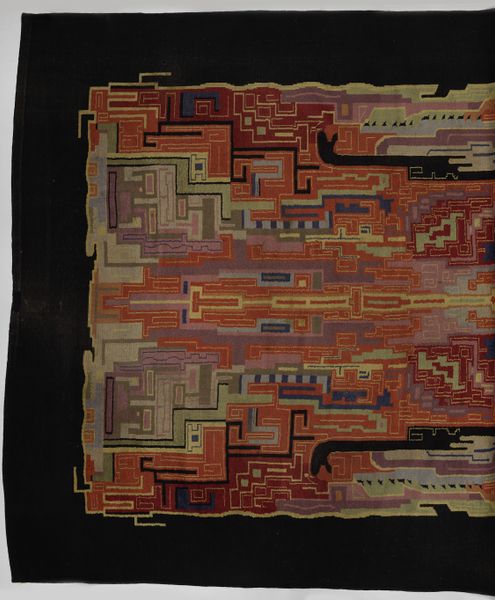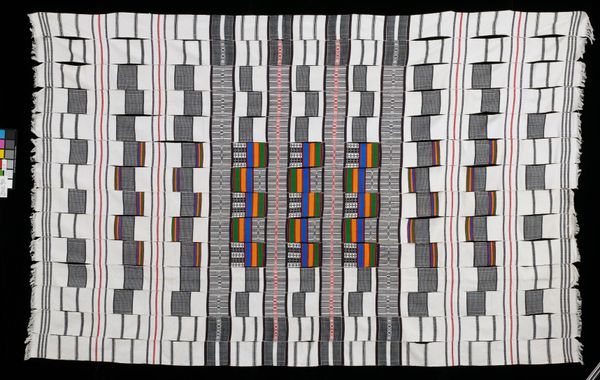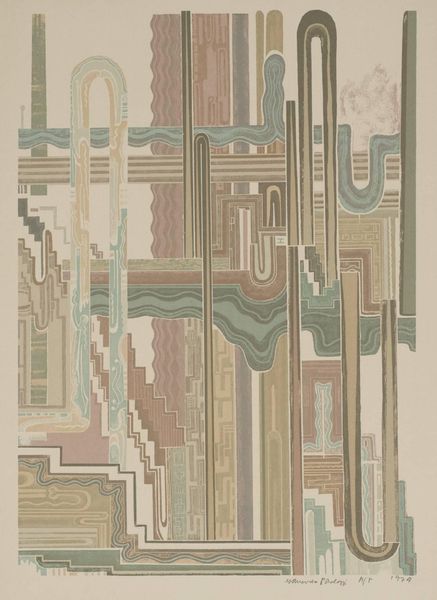
#
geometric grid
#
pattern-and-decoration
#
natural stone pattern
#
abstract painting
#
urban styling
#
geometric composition
#
geometric pattern
#
tile art
#
street graffiti
#
urban art
#
layered pattern
Copyright: Joyce Kozloff,Fair Use
Editor: So, we’re looking at Joyce Kozloff’s "Sayil," created in 1974. It's an abstract painting composed of lots of geometric patterns and stacked layers of shapes. The piece makes me think of a cityscape as if rendered in mosaics. What do you see in this work, considering the context of the time it was created? Curator: This piece really speaks to Kozloff's engagement with Pattern and Decoration movement of the 1970s, a deliberate pushback against the austerity of Minimalism that had dominated the art world. What’s fascinating here is how Kozloff appropriates the visual language of non-Western, often historically marginalized, decorative traditions, like tilework and textiles. It's a very deliberate effort to challenge the Western art historical canon. Editor: So, it's making a political statement just by its choice of aesthetics? Curator: Absolutely. Kozloff is reclaiming the decorative, positioning it not as ‘less than’ but as equally valid, politically potent, and capable of conveying meaning. Consider the title "Sayil," a Mayan city in Yucatan. This alludes to pre-Columbian art. How do you think using non-western sources impacted the art world then? Editor: I guess it opened up conversations about cultural appropriation versus appreciation, and who gets to define what 'good' art is. It sounds like the art world had been very exclusive until then. Curator: Exactly. Kozloff, along with other artists of the Pattern and Decoration movement, pushed for greater inclusivity within museums and galleries, advocating for art that reflected the diverse experiences of the public. They also wanted to disrupt the idea that museums were objective and neutral places. Editor: Wow, that's a lot more complexity than I initially saw just looking at the geometric designs. Now, I see so many more layers and connections. Curator: Art's ability to engage us politically and socially makes it continuously relevant.
Comments
No comments
Be the first to comment and join the conversation on the ultimate creative platform.
